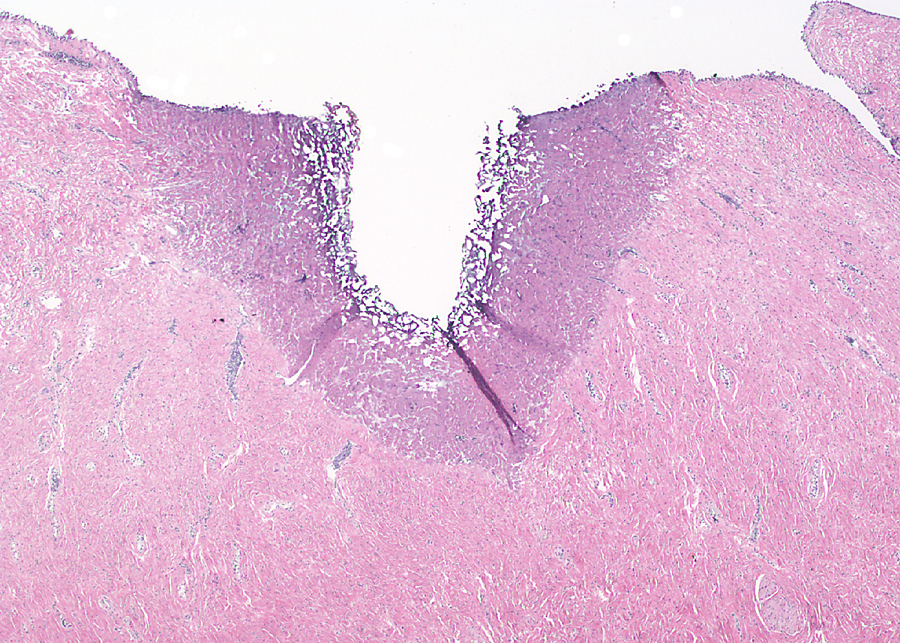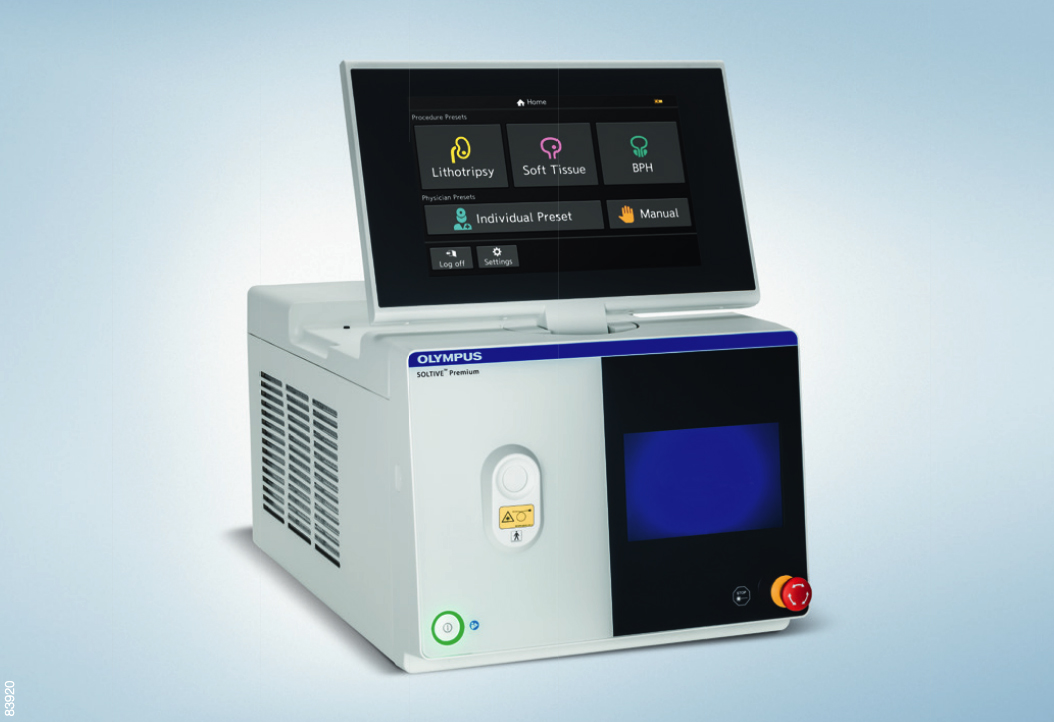Early Laser Research Spins Off to Support Medical Applications

Histological image from initial testing in 2005, showing the laser’s impact on a tissue sample. The Tm fiber laser leaves a clean, distinct cut, or kerf, with little damage to the surrounding tissue. (Credit: N. Fried)
In 2005, a Thulium (Tm) fiber laser developed by IPG Photonics with NASA funding was demonstrated as an emerging tool for urologic procedures by Dr. Nathaniel Fried at the Johns Hopkins School of Medicine and Keith Murray of NASA Langley Research Center. Originally developed for wind measurements with funding from ESTO’s Laser Risk Reduction Program (LRRP), the fiber laser has since been commercialized by at least six vendors for use in minimally invasive procedures, particularly for treatment of kidney stones.
Fried, who is now at the University of North Carolina at Charlotte, has authored several dozen journal articles about medical applications for the Tm laser. He recalled that “the Tm fiber was a promising new technology that had several advantages over Holmium:YAG lasers – the gold-standard for several decades.”
Holmium:YAG laser systems, which today can be found in nearly every hospital setting, are used during lithotripsy to break up kidney stones to be more easily flushed out of the body. A Tm fiber laser works essentially the same way. However, Fried said, “a Tm laser originates in fiber itself, which produces a more uniform, more precise beam and uses smaller optical fiber compared to Holmium:YAG, which means there’s more room for flushing out stone fragments through the ureteroscope.” The Tm fiber laser also has a much higher wall-plug efficiency – roughly 12% vs 1-2% for Holmium:YAG – and is much smaller and quieter.

A typical commercial tabletop Thulium fiber lithotripsy system. (Credit: Olympus Europa Co.)
Fried estimated that perhaps 10%, and growing rapidly, of the approximately 300,000 laser lithotripsies performed in the U.S. each year use a Tm fiber system. He also noted there are emerging applications for dermatology and other medical disciplines as well.
For Earth science, lasers and lidar remote sensing enable measurements of variables such as sea elevation, atmospheric composition, wind profiles, cloud cover, ice mass, and vegetation canopy. The LRRP was established in 2001 to formalize the design, testing, and development of durable laser systems, particularly in the critical 1- and 2-micron wavelengths, and many LRRP projects found their way into follow-on instrument development. The LRRP ended in 2010.